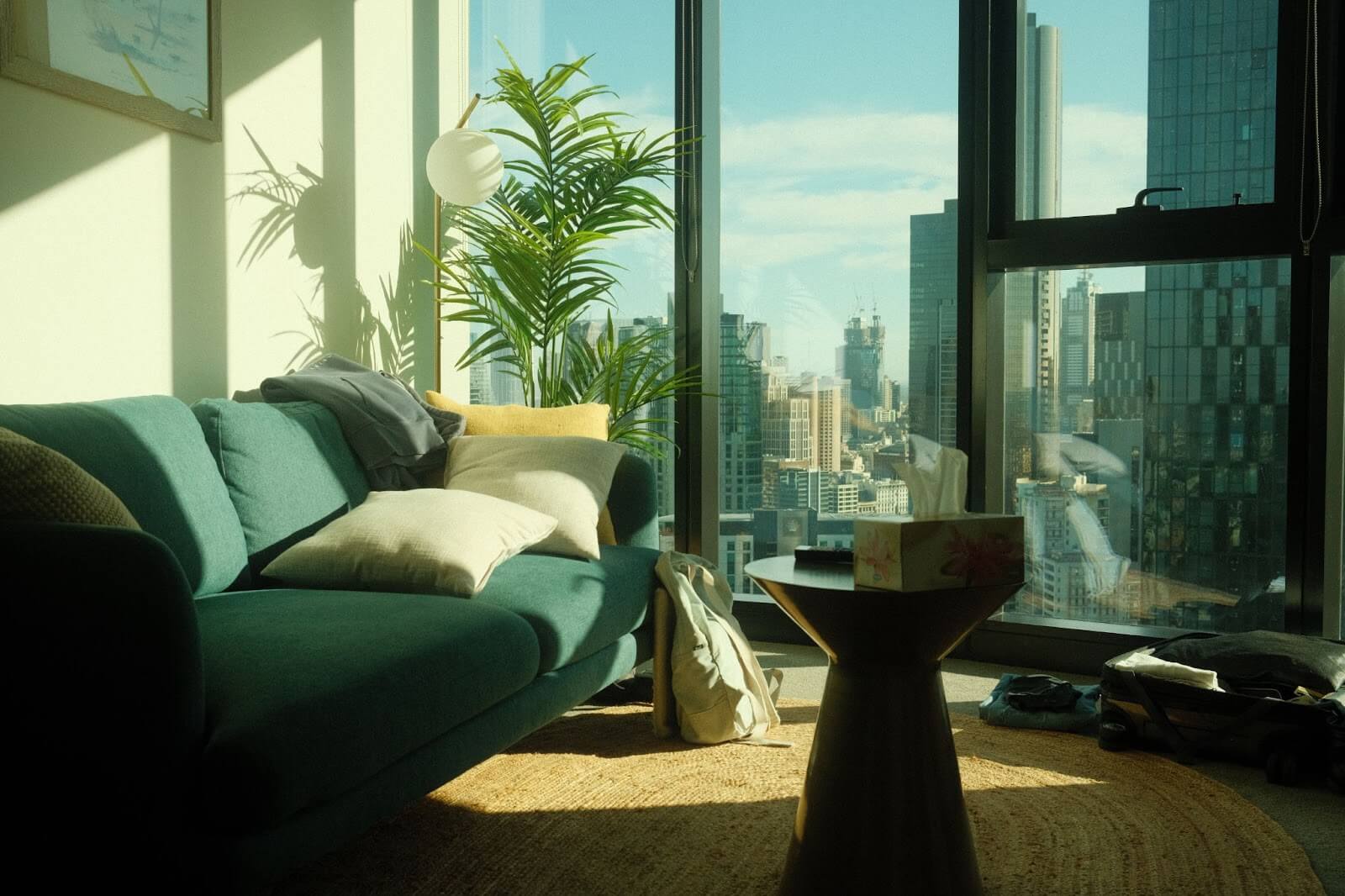
July 15, 2023
Sustainable Housing In Australia

In Australia, residential buildings contribute approximately 12 per cent of the nation’s carbon emissions, and with plans to reach net zero emissions by 2050, the energy efficiency of our homes and their environmental impact plays a substantial role. Although most Australians still live in separate houses (70%) compared to townhouses (13%) and apartments (16%) according to the 2021 census, the housing landscape in Australia is rapidly changing.
With house prices continuing to rise and buying power falling thanks to rising interest rates, more and more Australians are choosing to live in apartments, however it’s not just affordability that is driving the switch. For those looking for sustainable housing in Australia, apartments are far more efficient and require less resources than detached homes.
Why Apartments Are More Sustainable Than Homes
From reduced energy and water use, to efficient land use and shared amenities, if you’re looking for sustainable housing in Australia, there are a number of reasons why apartments are more sustainable than homes.
Efficiency
Thanks to denser settlements, smaller living spaces and reduced exposure to exterior temperatures, apartment buildings are much more efficient to heat and cool than detached homes. Unlike detached houses, shared walls in apartment buildings provide natural insulation, which reduces heat transfer between units. Additionally, the condensed nature of apartment supports centralised energy systems that can further contribute to energy savings.
Depending on building size, apartments can use as little as half the energy of a comparable single-family house, and with new construction replacing older less energy efficient buildings, energy use per household in large apartment buildings will likely decline even further and help to promote sustainable housing in Australia.
Efficient Land Use
An advantage of apartment living is the efficient use of land. As apartments maximise vertical space, a large number of residents can occupy a much smaller footprint, plus shared communal gardens can be enjoyed by all without the need for each household to have its backyard or garden space, minimising the amount of water needed to maintain a natural space that can be enjoyed by all. Apartment buildings also reduce urban sprawl, which can see more land designated for green spaces and natural habitats.
Accessible Public Transportation
As apartment buildings are typically built in and amongst cities with easily accessible public transportation, residents are more likely to have a lower reliance on private vehicles, which can reduce traffic congestion, lower greenhouse gas emissions, and improve air quality. Especially when located close to amenities and attractions, walking or cycling facilitate the development of vibrant neighbourhoods that create a sense of community.
Shared Amenities and Resources
In apartment complexes, residents often benefit from a range of shared amenities and facilities. From community gardens and laundry facilities, to gyms, cinemas, and even bars or restaurants in larger facilities, these can be enjoyed collectively, reducing the overall energy and resource consumption compared to individual ownership. These shared spaces foster a sense of community, which can promote social interactions and encourage the exchange of sustainable practices and ideas among residents.
Waste Reduction and Recycling
Apartment living offers greater opportunities for waste reduction and recycling, which is especially important in smaller residences. Shared waste management systems such as centralised recycling stations make it easier for residents to recycle effectively, and unlike houses, residents are not responsible for taking out and emptying bins. Additionally, the close proximity of neighbouring units promotes a culture of sharing and resourcefulness, where items such as tools, appliances, and furniture can be borrowed and shared instead of being individually owned, reducing the demand for new products and minimising waste generation.
Simplified Maintenance and Lower Environmental Footprint
The centralised nature of apartment complexes allows for more streamlined maintenance processes, offering residents a much more hands-off experience, saving residents time without sacrifice. Centralised water, electricity, and HVAC (heating, ventilation, and air conditioning) systems reduce maintenance needs and enable more efficient resource allocation whilst reducing the environmental footprint per household.
In the pursuit of a green future, apartments are far sustainable than detached homes thanks to greater energy efficiency, reduced water consumption, and efficient land use. For those coming from houses, embracing apartment living can be difficult, however in addition to being more sustainable, they are also more affordable, liveable, and commutable.
Sustainable housing in Australia in the form of apartment living can promote sustainable urban development, foster a sense of community, and contribute to the preservation of our planet’s resources.
Get Help Buying An Apartment
Whether you are looking to purchase your first home or move into your dream home, there are a number of things to consider when buying an apartment. To help, get in touch with the team at HYG. From stamp duty and strata fees, to advising on location, features, and amenities, our team can help you make the best purchase.
We are a fully integrated property developer, passionate about developing, constructing, selling and managing extraordinary properties, and have an in-depth knowledge about the property market in Sydney.

